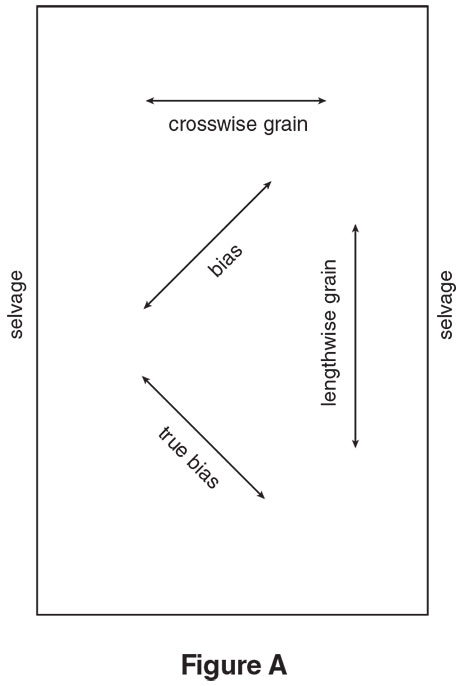|
Working with Bias Edges
Working with triangles or odd shapes means working with bias edges. While bias edges have a reputation for being difficult to work with, a few tips and a little practice make them more manageable.
The fibers that run either parallel (lengthwise grain) or perpendicular (crosswise grain) to the fabric selvage are straight grain.
Bias is any diagonal line between the lengthwise or crosswise grain (Figure A). At these angles the fabric is less stable and stretches easily. The true bias of a woven fabric is a 45-degree angle between the lengthwise and crosswise grain lines.
|
 |
A triangle or odd shape will likely have at least one edge that is cut on the bias, so it is even more important to handle the edges with care. You can tell immediately when a bias edge has been mistreated; it will become wavy.
When cutting, keep the fabric flat and move it as little as possible. Even gentle smoothing in place can distort the edges.
Never pull or stretch bias edges when stitching. Slow down and let your sewing machine gently feed the fabric under the needle. It truly doesn’t need your help!
Press bias edges with a dry iron. Lift the iron straight up off the fabric, and then move to a new position and lower it straight down. Don’t slide the iron over the seam allowances. This can stretch even straight-grain edges.
If you are having trouble with bias edges, you can try starching your fabric before cutting with a laundry starch or, on smaller pieces of fabric, a spray starch. Starching will give the fabric more stability overall. |
|
|
|
|